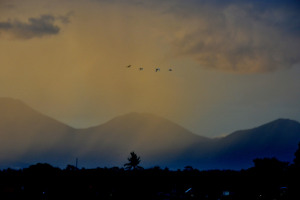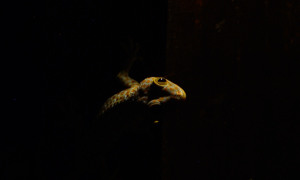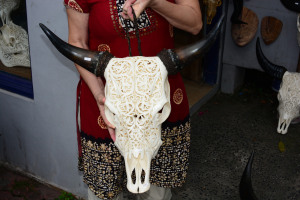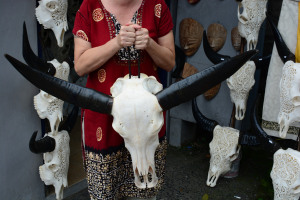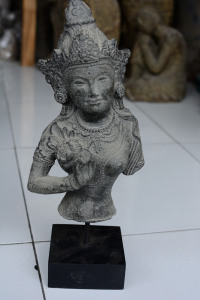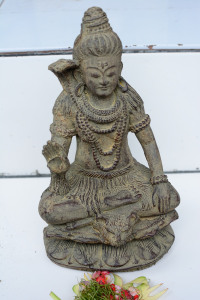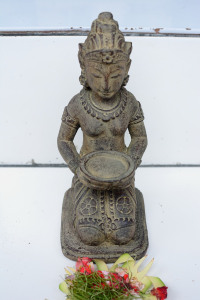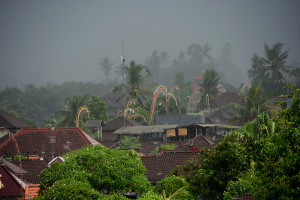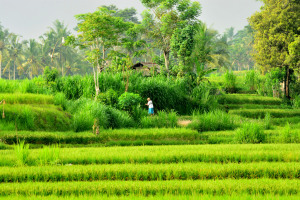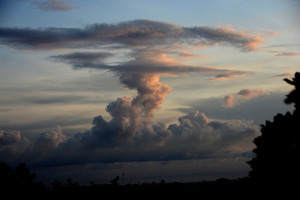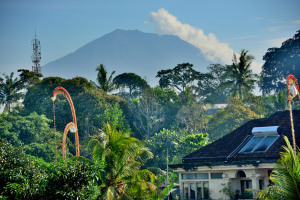BALI DEC 2014
Perhaps culture is the human response to environment. It would explain a lot about Bali. For example it doesn’t just rain here; an aubergine-coloured cloud mass invades your horizon, signalling its intent with cracks and rumbles, not really moving towards you as much as occupying more and more sky, until you hear the across the fields the swish of 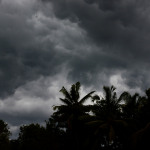 bucket-sized drops on big broad extravagant leaves. In 5 minutes you will be soaked. So too the Balinese don’t just have a funeral. They save and save and when the funds are there and the time is auspicious, they spend weeks making a huge papier-mache figure of a bull, and an enormous multi-tiered tower. These are carried through the streets on bamboo poles borne by
bucket-sized drops on big broad extravagant leaves. In 5 minutes you will be soaked. So too the Balinese don’t just have a funeral. They save and save and when the funds are there and the time is auspicious, they spend weeks making a huge papier-mache figure of a bull, and an enormous multi-tiered tower. These are carried through the streets on bamboo poles borne by 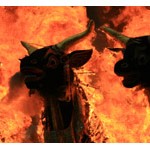 hundreds of the young and strong, followed by an entire gamelan orchestra. At the cremation ground the body is transfered from the tower to the bull, and then everything is ignited in a massive blaze. Drama. Colour. Power.
hundreds of the young and strong, followed by an entire gamelan orchestra. At the cremation ground the body is transfered from the tower to the bull, and then everything is ignited in a massive blaze. Drama. Colour. Power.
And everything is like that. Sit at night outside any village, and you will be engulfed by a syncopated wall of frog voice, punctuated with a rythmic, clear call of a jungle bird, and lonely checak vocalization. Then listen to the percussive complexities of the gamelan, (the only advanced musical tradition without written notation), and hear the similarities.
We have based ourselves in Ubud for the month of December, and still, after so many years of coming here, we are always amazed by the beauty of the place. For better and for worse, we have also come at the onset of the rainy season, and one of the major festival seasons. I actually quite like the rains. They clear the air of the steamy heat, and watching the clouds build and the monsoon pour from the shelter of a cane chair on a broad clay-tiled veranda is a wonderful 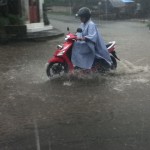 experience. Being caught on a busy road on a motorbike in a downpour is less delightful. And indeed, if we had wanted to make any beach or reef time this year, it would have been a frustrating month to do it.
experience. Being caught on a busy road on a motorbike in a downpour is less delightful. And indeed, if we had wanted to make any beach or reef time this year, it would have been a frustrating month to do it.
It is important when you arrive in Indonesia to look at a calendar, and note when the “red days” are. These are holidays, circled, predictably, in red. Locals will generally observe the ones 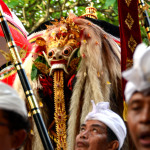 specific to their community, but banks, governments, institutions and many businesses are apparently more inclusive, and will be closed for all of them. And there are a lot. So now in Bali, in addition to the Christmas and New Year observations, there is the Galungan festival, beginning on Dec. 17, and ending with Kuningan on the 27th. It is a celebration of good over evil, but for our Balinese friends, especially the women, it is a marathon of processions, temple offerings, and making
specific to their community, but banks, governments, institutions and many businesses are apparently more inclusive, and will be closed for all of them. And there are a lot. So now in Bali, in addition to the Christmas and New Year observations, there is the Galungan festival, beginning on Dec. 17, and ending with Kuningan on the 27th. It is a celebration of good over evil, but for our Balinese friends, especially the women, it is a marathon of processions, temple offerings, and making 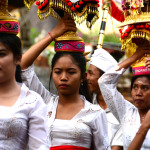 decorations. The most spectacular of these are the penjor, towering bamboo “flags” festooned with woven palm leaf, rice stalks, and bright fabric, set up on the street outside of many houses and shops. They are also the inspiration for the umbal-umbal, the ceremonial Balinese flags, which we carry in our store. The days before the penjor go up are especially busy for merchants such as Wayan, who we buy our umbrellas and umbals from. He works non-stop to supply locals with penjor accessories. Festivals have no small economic impact: a basic pejor will cost around $20, and the most elaborate can be 10 times that much.
decorations. The most spectacular of these are the penjor, towering bamboo “flags” festooned with woven palm leaf, rice stalks, and bright fabric, set up on the street outside of many houses and shops. They are also the inspiration for the umbal-umbal, the ceremonial Balinese flags, which we carry in our store. The days before the penjor go up are especially busy for merchants such as Wayan, who we buy our umbrellas and umbals from. He works non-stop to supply locals with penjor accessories. Festivals have no small economic impact: a basic pejor will cost around $20, and the most elaborate can be 10 times that much.
The day when all the penjor are put up is quite magical. Suddenly, from the little village lane where our house is, to the busy streets leading into town, we are driving under a vast living art 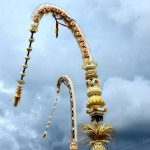 installation. The ornate dangling tails of the flags bob in the breeze above our heads, waving at us, as if we are royalty, and our subjects are beautiful slender gigantic tree creatures.
installation. The ornate dangling tails of the flags bob in the breeze above our heads, waving at us, as if we are royalty, and our subjects are beautiful slender gigantic tree creatures.
As mentioned earlier, it’s not the best time to get things done in Bali, and many of our trips to see merchants or source new products have to be postponed as the shops are closed. But giving ourselves a month here means we have time to do things at leisure, and we are happy, at the end of the day, to have made orders with old suppliers as well as new.
Wayan, our flag maker, is our longest running connection here. He has come a long way from his early days, when both his and our budgets were tight, and our modest orders were a big boost for him. Now he can even see the bright side of  the two shops across the road converting to similar temple accessory businesses: it makes this corner a destination, and actually brings in more customers.
the two shops across the road converting to similar temple accessory businesses: it makes this corner a destination, and actually brings in more customers.
We have also been working with Gus for several years. He makes our cast concrete sculptures. As with Wayan things are very busy with him at the moment. He does most of the work himself, along with his wife, and the pressure of filling orders, along with the added demands of the festival season, are taking their toll. I think I sense some relief when our order is reduced from last year, and there is a long time line to finish it. The reality for us is that, as popular as they are, the concrete sculptures are extremely difficult to move about week after week. The heavy ones, especially, are prone to chipping with a lot of handling, and in one of last seasons most depressing moments, I 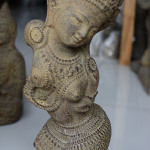 discovered that about 30% had been damaged by Canada Customs during the inspection of our container.
discovered that about 30% had been damaged by Canada Customs during the inspection of our container.
This will be the second year, after a successful debut, that we have bought parachute-nylon hammocks from the lovely Riga. She operates out of a tiny shop on Raya Andong, and is also optimistic about this year, but mainly because she owns her property. Real estate is going crazy in Ubud, and investors are snapping up everything they can lay their hands on for unrealistic prices. This means that landlords are forcing the leases up, and a lot of small businesses will be facing a crunch as rising costs squeeze their already-tight margins. I worry that this is merely another manifestation of the global war on independent operators, that we are destined for a future of  big box conformity. Citizens! Resist! Support small business wherever you find it!
big box conformity. Citizens! Resist! Support small business wherever you find it!
We are always on the lookout for the interesting and the original, and in Kadek we found an artist that goes so far in these directions that we had to keep asking ourselves “but will it work?” Kadek is a carver who uses the medium of animal skulls. There is something primal, a little Lord of the Flies about his tiny studio, but any misgivings about dark motivation are immediately dispelled by the wholesome nature of Kadek himself. The eighth son of a farmer, there is nothing Goth about this man. Instead, he is enthusiastic to show off his creations. Some, like the Indian chief with a war bonnet, are less successful than others, but he knows his market, and Kadek says they sell in Korea. We loved the delicate work of his flowers and vines, especially on the curved-tusk aggression of the boar skulls. We also couldn’t resist a couple of un-carved water buffalo skulls, just to show off what a 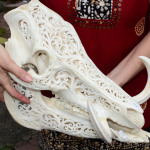 massive creature it is.
massive creature it is.
On the other kinder/gentler side of our product line we bought more Javanese sarongs from Ibrahim, whose grandfather came from Madras to open a textile business in Jalan Sulawesi, Denpassar’s cloth bazaar, and who’s 84 year-old grandmother still tends the store on a regular basis. We are also bringing in bamboo wind chimes, produced by a woman named Bella. Now, 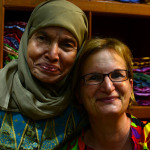 there may be a gasp of surprise from some, as we have generally put wind chimes in the same category as drop-crotch sultan pants and didgeridoos. But like Riga’s hammocks, we have lived with a bamboo wind chime, and are sold on them. You don’t have to believe me – come down to our sales and hear them for yourself!
there may be a gasp of surprise from some, as we have generally put wind chimes in the same category as drop-crotch sultan pants and didgeridoos. But like Riga’s hammocks, we have lived with a bamboo wind chime, and are sold on them. You don’t have to believe me – come down to our sales and hear them for yourself!
Here are some more photos of Bali and some of the goods we are bringing back. There will be a more comprehensive collection on the sales page of our website http://www.kebeandfast.com when some technical problems have been worked out. Shortly.
Speaking of photography, I welcome everyone along on the journey with our new camera, a Nikon D5200. I am carrying 2 lenses: a fixed 35mm with f1.8; and a 18-200mm f3.6. It is a learning experience, and if you are interested, please check out some of the results as I post them on our flickr site. Go to http://www.kebeandfast.com/, and click the flickr link at the top of the page.
Best to everyone, your foreign devil corespondents,
Katheryn and David

